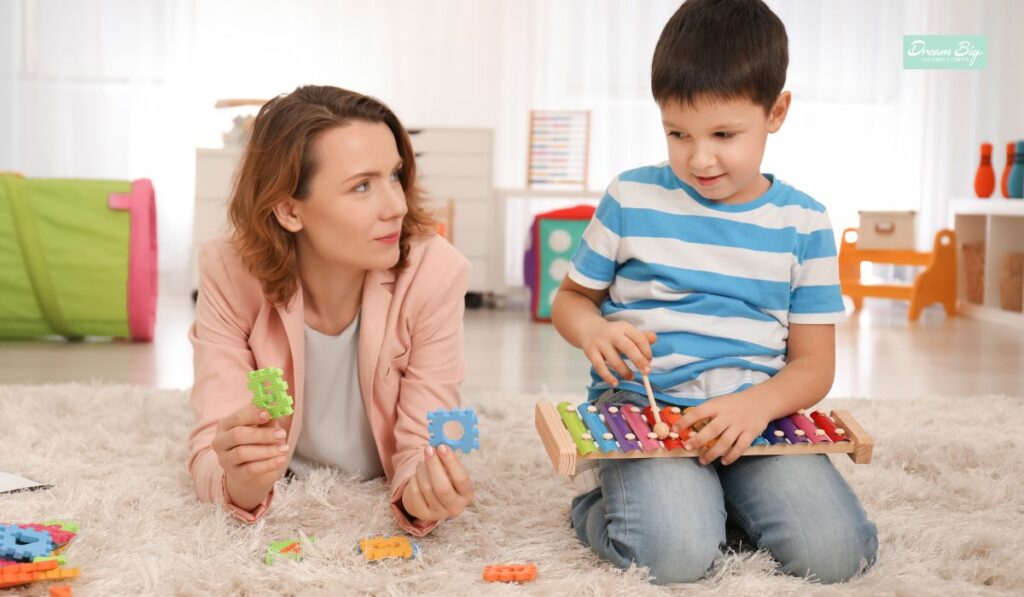Children with autism spectrum disorder (ASD) often thrive in environments with structured routines. Establishing consistent routines can provide a sense of predictability and security for children with autism, aiding in their overall development. In this article, we will explore 10 effective ways to establish routines for children with autism, fostering a supportive and stable environment for their growth.
Understanding Individual Needs
Recognizing that every child with autism is distinctly different, it’s imperative to acknowledge and address their individual preferences, sensitivities, and strengths. Crafting tailored routines becomes essential to cater to the unique needs of each child. When establishing routines, take into account factors like afferent preferences, communication styles, and personal interests, fostering an environment that supports their specific requirements and promotes overall well-being. Additionally, seeking specialized interventions, such as aba therapy near me, can further contribute to the comprehensive support and development of children with autism.
Visual Schedules
Expanding on the significance of visual schedules, it’s important to understand the profound impact they can have on children with autism. These schedules serve as invaluable tools by offering a concrete and comprehensible depiction of daily activities. Incorporating visual elements, such as pictures, symbols, or written words, enables children to visually comprehend the sequence of events throughout the day.

This visual aid not only enhances their understanding of time and order but also minimizes anxiety often associated with unpredictability. For children with autism, who may thrive on routine and struggle with uncertainty, a well-crafted visual schedule acts as a reassuring guide, providing clarity and structure.
Consistent Timing
Consistency in timing plays a pivotal role in fostering a supportive environment for children with autism. By adhering to a regular schedule for daily activities like meals, playtime, and bedtime, a sense of predictability is established. This predictability is particularly crucial for children with autism, as it instills a feeling of security and control. The establishment of fixed time slots for various activities contributes to an organized and structured environment, creating a stable routine that aids in the overall well-being and development of children on the autism spectrum. This routine not only provides a framework for the day but also helps mitigate potential anxiety by offering a reliable and dependable sequence of events.
Use Timers and Countdowns
Incorporating timers and countdowns is a valuable strategy when creating routines for children with autism. Introducing the concept of time through these visual aids serves as an effective means of signaling transitions between activities. Timers act as clear and tangible cues, enabling children to mentally prepare for upcoming changes in their routine. This proactive approach aids in reducing anxiety and promoting smoother transitions.
Furthermore, adjusting the duration of timers gradually allows for the development of flexibility in transitioning. As children become accustomed to the routine and the passage of time, they can adapt more easily to changes in activities.
Incorporate Preferred Activities
Enhancing the routine for children with autism involves integrating activities they genuinely enjoy. By infusing preferred activities, such as favorite games, toys, or hobbies, into their daily schedule, the routine becomes not only structured but also enjoyable. This inclusion of favored elements establishes positive associations with the routine, fostering a sense of enthusiasm and engagement.
When children find pleasure in the activities within their routine, adherence becomes more likely. This approach not only makes the routine more appealing but also encourages a cooperative and positive mindset.
Provide Clear Instructions
Offering clear and concise instructions is pivotal when establishing routines for children with autism. Utilizing straightforward language and breaking down instructions into step-by-step guidance proves beneficial for their understanding. To enhance comprehension further, incorporate visual supports like written or pictorial instructions.
By presenting information in a visually accessible format, such as using images or simple written cues, you provide additional clarity. This approach not only aids in comprehension but also supports smoother transitions between tasks. For children with autism who may thrive on visual learning, these clear instructions become essential tools in facilitating effective communication and promoting a sense of confidence and independence within their daily routines.
Offer Choices within Limits
Empowering children with autism involves fostering a sense of autonomy within their routines. Offering choices within established limits, such as letting them choose between two preferred activities or deciding on the task order, grants them a degree of control. This sense of autonomy contributes significantly to a positive routine experience, as it not only acknowledges their preferences but also instills a feeling of independence, promoting a more engaging and cooperative approach to their daily activities.
Create a Calm Down Corner
Acknowledging the potential challenges that children with autism may face, it is essential to create a designated calm down corner within their environment. This space should be equipped with afferent-friendly items like fidget toys, soft cushions, and calming visuals. Encouraging the child to use this designated area when experiencing afferent overload or emotional distress provides them with a safe and supportive retreat. The calm down corner not only serves as a practical solution for managing stress but also reinforces the importance of self-regulation and coping strategies for children with autism.
Celebrate Achievements
Recognizing and celebrating achievements, regardless of size, is crucial when establishing routines for children with autism. Positive reinforcement, whether through praise, rewards, or a visual token system, serves as a powerful motivator. By reinforcing desired behaviors and adherence to the established routine, caregivers and educators create a supportive and encouraging atmosphere. This positive approach not only boosts the child’s self-esteem but also fosters a willingness to engage in the routine, making the overall experience more enjoyable and effective.
Regularly Review and Adjust
Recognizing that children’s needs and preferences are dynamic, it is crucial to regularly review and adjust routines. Soliciting feedback from parents, caregivers, and educators helps in understanding the evolving requirements of the child. Remaining open to modifications ensures that the routine stays aligned with the child’s changing needs, promoting an environment that continually supports their growth and development. Regular reviews and adjustments underscore the adaptability necessary for tailoring routines effectively to each child with autism.

Conclusion:
Establishing routines for children with autism is a dynamic process that requires flexibility, understanding, and a personalized approach. By incorporating visual supports, consistency, and individualized strategies, caregivers and educators can create a supportive environment that enhances the well-being and development of children with autism.
Our ABA therapy experts in the high desert work closely with children with autism to identify their strengths, challenges, and preferences, enabling them to develop personalized routines that promote independence and reduce anxiety. Through systematic teaching methods and consistent reinforcement, ABA therapy helps children with autism understand and navigate daily routines more effectively.
Moreover, ABA therapy equips caregivers and educators with the tools and knowledge to support children with autism in maintaining and generalizing routines across different environments. This comprehensive approach fosters not only skill development but also autonomy and confidence in children with autism as they navigate various daily activities.
If you are looking for the aba therapy center in the high desert, Dream Big Children’s Center can be a great option for you. Dream Big Children’s Center is Southern California’s authority on early intervention and applied behavior analysis. Our centers are warm, welcoming, and, most importantly – fun!
FAQs
Why is it essential to understand individual needs when creating routines for children with autism?
Understanding individual needs is crucial as each child with autism is unique. Tailoring routines to their preferences, sensitivities, and strengths fosters an environment that supports their specific requirements, promoting overall well-being.
How do visual schedules benefit children with autism, and why are they important?
Visual schedules offer a concrete representation of daily activities, reducing anxiety associated with unpredictability. Incorporating visual elements helps children with autism understand the sequence of events, providing clarity and structure.
Why is consistent timing important in establishing routines for children with autism?
Consistent timing establishes predictability, instilling a sense of security and control. Fixed time slots for activities contribute to an organized and stable routine, mitigating potential anxiety by offering a reliable sequence of events.
How do timers and countdowns aid in transitioning for children with autism?
Timers serve as clear cues, helping children mentally prepare for transitions. Gradually adjusting timer durations develops flexibility, making it easier for children to adapt to changes in activities.
Why is it beneficial to incorporate preferred activities into the routine for children with autism?
Infusing preferred activities makes the routine more enjoyable, creating positive associations. When children find pleasure in the activities, adherence to the routine becomes more likely, fostering a cooperative mindset.
How do clear instructions contribute to effective routines for children with autism?
Clear and concise instructions, coupled with visual supports, enhance comprehension and facilitate smoother transitions between tasks. This approach aids in effective communication and promotes independence within their daily routines.
Why is offering choices within limits important in empowering children with autism?
Empowering children involves granting them autonomy. Offering choices within limits, such as deciding on preferred activities, contributes to a positive routine experience, acknowledging their preferences and promoting engagement.
What is the significance of creating a calm down corner for children with autism?
A calm down corner equipped with afferent-friendly items provides a safe retreat for children facing afferent overload or emotional distress. Encouraging its use reinforces the importance of self-regulation and coping strategies.
How does celebrating achievements positively impact the establishment of routines?
Recognizing and celebrating achievements through positive reinforcement boosts self-esteem and motivates children to engage in the routine willingly. This approach creates a supportive and encouraging atmosphere.
Why is it important to regularly review and adjust routines for children with autism?
Children’s needs evolve, requiring routines to be dynamic. Regular reviews, feedback from caregivers, and openness to modifications ensure that the routine aligns with the child’s changing needs, supporting continuous growth and development.
How can visual schedules benefit children with autism?
Visual schedules provide a clear and tangible representation of daily activities, aiding children with autism in understanding the sequence of events. This visual aid enhances their comprehension of time, reduces anxiety associated with unpredictability, and acts as a reassuring guide, fostering clarity and structure in their routines.
How do timers and countdowns contribute to routine success for children with autism?
Timers and countdowns serve as visual cues, signaling transitions between activities for children with autism. Acting as clear and tangible reminders, they enable mental preparation for upcoming changes, reducing anxiety and promoting smoother transitions. Gradual adjustments in timer durations further develop flexibility, helping children adapt more easily to variations in their routines.

